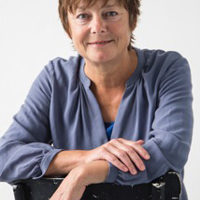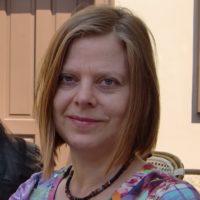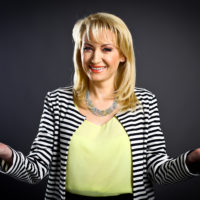

Alan Seale provides hope and a big vision for a world that feels overwhelmingly divided and unjust. Drawing on ancient wisdom traditions, quantum physics, and complexity theory, Alan disrupts traditional leadership paradigms with a set of new and powerful tools that have the potential to bring us all closer together and give us the results we need in times of uncertainty and complexity.
—Kathrin O’Sullivan, Executive Coach & Consultant, Former Head of Executive Development at Google
Transformational Presence gives me a simple and practical framework for conscious leadership. These tools are critical to how I create a safe and connected environment for self-directed teams—the core foundation for how I apply Design Thinking and Scrum Agile.
—Jonathan Anderson, Vice-President Digital Integration Director at Citizens Financial Group
Transformational Presence is an essential guide and “how-to” book for:
- Visionaries who want to move beyond their vision into action
- Leaders who are navigating the unknown and pioneering new territory
- Individuals and Organizations committed to living into their greatest potential
- Coaches, Mentors, and Educators supporting the greatest potential in others
- Public servants committed to making a difference
- Anyone who wants to help create a world that works
The print, Kindle, and iBooks editions of Transformational Presence: How To Make a Difference in a Rapidly Changing World are now available for purchase for $14.95.
The companion book, Transformational Presence: The Tools, Skills, and Frameworks, is also now available for purchase for $79.
Copies of both books are included in the registration fee for participants in the Transformational Presence Leadership in Action program. Participants will receive both books on the first day of the program.
Introduction—Making a Difference In a Rapidly Changing World
Chapter 1—Why Transformational Presence? Why Now?
Chapter 2—The Great Breaking Open
Chapter 3—We Start With Just Three Questions
Chapter 4—How the World Works: Three Basic Principles
Chapter 5—The Power of Listening and Observing
Chapter 6—Whole-Mind Thinking and Whole-Being Awareness
Chapter 7—Complicated, Complex, or Complexicated?
Chapter 8—Why We Resist Complexity and Why Embracing It Is Critical
Chapter 9—TransformAction: A New Kind of Leadership For the Way Forward
Chapter 10—Becoming TransformActional Leaders: Four Modern-Day Archetypes
Chapter 11—TransformAction: The Way Forward
Bibliography
Acknowledgments
The Center for Transformational Presence
Introduction — Making a Difference In a Rapidly Changing World
There is a vitality, a life force, a quickening,
that is translated through you into action,
and because there is only one of you in all of time,
this expression is unique.
And if you block it,
it will never exist through any other medium
and it will be lost.
The world will not have it.
It is not your business to determine how good it is
nor how valuable nor how it compares with other expressions.
It is your business to keep it yours clearly and directly,
to keep the channel open.
You do not even have to believe in yourself or your work.
You have to keep yourself open and aware
to the urges that motivate you.
Keep the channel open.
No artist is pleased.
There is no satisfaction at any time.
There is only a queer divine dissatisfaction,
a blessed unrest that keeps us marching
and makes us more alive than the others.
—Martha Graham, choreographer and pioneer of modern dance
We live in a rapidly changing world. In fact, change is happening at a pace never before seen in human history, and that pace is likely to keep getting faster. Because there are more and more moving pieces and things are less and less clearly defined, uncertainty has become the new normal. Some might say that everything is breaking down and falling apart. Yet what if things are actually breaking open so that everything that has been hidden or does not serve a greater good for all can be revealed? What if things are breaking open so that we can make a fresh start—so that something new can be created? What if big things are waiting to happen? What if we are at a tipping point for creating a world that works?
Chances are that you, like me, feel called to make a difference in this rapidly changing world, or you wouldn’t have been drawn to this book. Years ago, modern dance pioneer and choreographer Martha Graham spoke the words that begin this Introduction to choreographer Agnes de Mille (Agnes de Mille, p. 264). Today, more people than ever are feeling their own “divine dissatisfaction” or “blessed unrest” and want to make a difference. Yet also, unfortunately, it’s easy to get bogged down in not knowing how or where to begin.
It’s OK that you don’t know. Just start. Start where you are, and start now. It doesn’t matter as much where you begin as it does that you just begin. As you do, things will start to happen, and a path will begin to reveal itself. This is the new world. We discover and create as we go, working with what we have and manifesting what we don’t have. Step by step, things unfold and, through the process, we learn how to do what we need to do. This book will help you get started.
I wrote this book for people who are committed to making a difference—people who have not just a desire, but a drive or passion within them for being of service towards a greater good. This book is for visionaries who want to get beyond their vision into action. It’s for leaders who seek support in navigating the unknown and pioneering new territory. It’s for coaches who support people in living into their greatest potential and bringing their gifts to the world. It’s for teachers who are looking for simple yet powerful language and structure to make big concepts accessible and applicable for all. It’s for people who have dedicated significant portions of their lives to serving others. And it’s for anyone who wants to help create a world that works.
The Transformational Presence approach might not be what you would expect to find in a “how-to” book. You will not find a ten-step plan or process. You will not find a magic formula that makes all things happen. That’s because linear, detailed, step-by-step plans and formulas often don’t work very well anymore. However, what you will find are simple, practical, and powerful approaches that can serve you no matter what your project or challenge may be.
This book is actually the first of a two-part Transformational Presence set. It begins by offering a fundamental understanding of what Transformational Presence is and the role it can play in today’s world. From there, we explore how life works as energy in motion and how that can help us in these times of rapid change and deep uncertainty. Through this exploration, you will learn more about how to navigate this unpredictable, complex, and often confusing world. Finally, we prototype a new kind of leadership—a leadership that serves us going forward in the most powerful, productive, effective, and impactful ways—a leadership that can support us in navigating new territories and learning to thrive in new creative spaces and new ways of being.
In the second book, Transformational Presence: The Tools, Skills, and Frameworks, we continue to prototype this new leadership through more than forty simple, powerful, and practical tools, frameworks, skills, models, and approaches that are designed specifically for our rapidly changing times. You can begin applying them immediately in your life, leadership, and service. They are effective in all kinds of settings—with individuals, families, classrooms, teams, organizations, and companies. This first book will expand your thinking, perception, awareness, and understanding. Then the Frameworks book will help you discover “how” to do whatever needs to be done as you do it. These two books together are also the primary resource books for our newest Leadership Development programs (TransformationalPresence.org).
While there is an intentional linear flow throughout this book, I have also written each chapter so that it can stand alone. Therefore, as you look at the Table of Contents, if you are drawn to a particular chapter topic right away, it’s OK to start there. Then keep reading the chapters in the order that they call out to you. To get the most out of this book, I also encourage you to share it with your friends and colleagues. You might want to organize a discussion group to explore the book chapter by chapter and share insights and discoveries.
Before we dive into the first chapter, perhaps it is helpful to clarify what I mean by “a world that works.” Within the context of all that is happening today, it can be difficult to imagine that such a world could be possible. If we think of a world that works as a specific result or outcome, then to create that world is a daunting task indeed. However, if we remember that transformation happens through process, and that it happens from the inside out, then creating a world that works becomes about process and ways of living, being, and doing, not about outcomes. These are concepts that we will explore in the coming chapters.
Large-scale societal transformation happens as a result of transformational shifts over time at the grassroots level. It’s an ongoing and ever-evolving process that happens one person, one family, one organization, one company, and one country at a time. It unfolds through conversations with the people around us, especially when we create spaces where it is safe to be open and honest, to be curious and to explore, and to listen without judgment. Societal transformation comes alive in those moments when we recognize ourselves in other people who we always thought were different from us. It’s awakened when we spend time in the beauty and wonder of nature, turning off devices and conversation and just being present with the natural world. It unfolds through shared experience, both joyful and tragic, and through exchanging ideas with colleagues and friends. It expands through discussion groups in houses of worship, social clubs, and the corner café or bar. Over time, we reach a tipping point and recognize that a shift in consciousness has occurred. Again, it’s a process.
In the end, the only way we will find out whether or not our visions can become reality is to commit to them and start taking steps towards manifesting them. For me, what I describe in these next few paragraphs gives a sense of direction and fundamental purpose for my work in the world.
When I speak of a world that works, I don’t mean a perfect world. Actually, I don’t believe that there is supposed to be such a thing. I believe that our most fundamental reason for living is to learn. If everything was perfect, what would be the need for learning? On both individual and societal levels, we are all on different learning curves. Some are steep—at times they may even feel insurmountable. Other learning curves feel gentler and easier to climb. None of us can truly know what others are experiencing on the inside—their struggles, fears, challenges, and opportunities. However, though our outer circumstances may be very different, what we experience on the inside is more similar than we might imagine.
Years ago, one of my first life teachers often said, “We all have the same hundred lessons to learn. It’s just that we learn them in different sequences.” So while I’m working on lesson number 23, you might be on lesson 58. While one family is working through challenges of survival because of lack of educational opportunities and financial resources, another family is faced with learning how to be good stewards of their wealth. While one country is struggling with the most basic human rights issues, another country has established those basic freedoms, yet is working through less obvious, yet very real, racial, gender, and class issues. Regardless of who we are and where we live, we are all in a process of learning. In areas of life where some of us are doing quite well, others may be struggling. And what others have mastered, we may find challenging. In a world that works, we acknowledge the challenges that come with learning, growth, and development, and stand committed to working with one another instead of against one another.
When I imagine a world that works, I imagine a world where we talk with one another. Perhaps even more importantly, we listen to one another. We communicate openly between cultures, governments, and businesses. We are willing to hear and consider different ideas, approaches, value systems, and ways of thinking, and we all understand that no one has the whole truth. It takes the perspectives of everyone involved to be able to see the entire picture. In those dialogues, we accept that sometimes it will be easy to find the common goal and a path that everyone can agree on. At other times, there will be disagreement and conflict. After all, the many people and cultures of the world hold vastly different value structures and are in different places in their own evolutionary process. Therefore, each individual and each culture is learning different lessons and working through different issues at different times. I learned a long time ago that peace is not the absence of conflict, yet it can be how we choose to respond to the conflict.
In a world that works, there is an understanding that everything is interconnected and therefore, everything impacts everything else. There is a common understanding that the wellbeing of one is ultimately dependent on the wellbeing of all. Because of that understanding, we have a shared commitment to finding a way of living and working together where everyone gets at least some of the help, support, information, knowledge, and understanding they need, and where no choices or decisions are made at the expense of others. In a world that works, we are willing to be present with both joy and pain as a natural part of life, within ourselves and in others. We take personal, business, and government integrity seriously and accept responsibility for our choices and actions, both those that turned out well and those that we regret. We acknowledge which choices and actions served a greater good and which ones served only a select few. And from that awareness, we seek to make choices that serve something bigger than ourselves—to serve more than only our own interests.
In a world that works, we create societal and organizational cultures where exploration, discovery, creativity, and innovation are encouraged and supported. At the same time, there is a general understanding and acceptance that when we are trying something new, it will not always turn out as we had hoped. We create a space where it is safe to learn. In a world that works, there is also a common understanding that everything will not change overnight. In fact, some things may take many years—even many generations—to be accomplished. Consider the beautiful cathedrals of Europe or many of the ancient sacred temples and sanctuaries of the world. Many of them took more than a hundred years to build. Those who were a part of a project’s beginning had no expectation of seeing it finished in their lifetimes. The artisans and craftsmen just focused on doing their part in the creation of something that they hoped would be beautiful, inspiring, and uplifting to those who would visit in the future. They took great pride in their work and in their contribution to the realization of a bigger vision.
Futurist Ari Wallach calls this “Longpath” (longpath.org)—a practice made up of three transformative ways of thinking. The first is “transgenerational thinking”—thinking beyond our lifetime and considering the impacts on generations to come. This idea is not new. Native American traditions have taught us to consider the impact of our actions and decisions on seven generations into the future. However, because of our current obsession with what Wallach calls “short-termism,” transgenerational thinking feels like a new idea. The second of his three transformative ways of thinking is “futures thinking.”
Ari Wallach points out that, as a culture, when we think about the future, our first thoughts often go to the evolution of technology and what might become possible in that future world. While technology is certainly important, Wallach reminds us that there are also other “futures” to consider. For example, how might our sense of ethics and morality evolve? What is the future of families and social systems? What is the future of compassion and human relations? What about the futures of faith and art? Wallach reminds us that we have many futures to imagine, not just a future based on technology.
Finally, there is “telos thinking.” The Greek word telos means “ultimate aim” or “ultimate purpose.” With whatever endeavor we are engaged, telos thinking invites us to consider one simple yet powerful question: To what end are we doing this? In other words, what will be different by taking this step, changing this policy, or shifting this approach? What will come after? And not just a year from now or even five years from now. What will have happened 20, 50, or 100 years from now because we made this choice today? In a world that works, the concept of Longpath is part of the mainstream conversation. It is accepted that some projects will be completed within months or a few years, while others will take much longer. Leaders, organizations, corporations, and governments are expected to have a Longpath vision. In planning and policy discussions, “To what end?” is a standard question.
In a world that works, society as a whole expects choices to be made and actions to be taken in service of the Longpath view for the greater good of all. Making a difference in the world begins with being willing to be fully present with the invitations, opportunities, challenges, and complexities that are in front of us. Then, as best we can, we get to the core or essence of what is happening and begin working from the inside out. From there, we move forward in powerful, effective, and sustainable action. These two books show you how.
I believe that life is driven by an evolutionary force and intelligence—first, a force for survival, and then an intelligence that can support us to thrive. Look at the resilience of nature. New growth comes within weeks after a forest fire. Wildflowers, grasses, shrubs, and even trees grow out of rocky cliffs. Left to its own process, life will find a path forward. Life will carry us. In the evolutionary process, there is always the next potential waiting to unfold. However, it’s up to us to learn how to work with that evolutionary intelligence and its powerful flow rather than try to manipulate outcomes by pushing against the natural and evolutionary process.
This is not a new message. However, it’s a truth that we easily forget when faced with challenges and uncertainty. We are conditioned to push against what is “not working” instead of looking for the “intelligence” or “message” that is trying to get our attention through our circumstance. There is always a wave to ride, a potential to follow, something wanting to happen next. It’s the natural flow—the instinct of life for survival, and, ultimately, for thriving.
There is something that “wants to happen” in the world through you. Whatever your vision or calling—whatever the contribution you are here to make—let this book and its companion help you do it. We are at a tipping point. The world can’t afford for you to wait any longer. The time to put our focus on creating a world that works is now.
Introduction
Part I—Creating Context
Leadership in a VUCA World and The Great Breaking Open
Complicated, Complex, or Complexicated?
Part II—Definitions and Concepts
The Three Questions and the Transformational Presence Model
The Three Fundamental Principles of Transformational Presence
From Transactional To Transformational To TransformActional
The Partnership of Presence and Action
Kokoro and the Four Transformational Presence Leadership Archetypes
Part III—The Skills, Tools, and Frameworks
Becoming Mindful
Time as Energy in Motion
Seeing Things Within a Bigger Context
Push Against – Flow With
Wave-Particle Collapse
Four Levels of Engagement—3 Approaches/Exercises
The Seer Sequence—Learning to see, observe, perceive, and understand in new ways
Pattern and Texture Walks
How Are You Showing Up?
Slowing Down To the Speed of Presence
Letting Life Talk To You
Listening Focus
Enlightened Dialogue
Dropping Underneath or Lifting Above
Sensing Patterns and Flows of Energy in a Project or Situation
Partnering With Expanding and Contracting Energies
Energy Awareness
Obstacle Walk
Inhabiting Your Space
Staying In Your Own Presence While Actively Engaged In a Crowd
Learning Forward Clustering
The Three Intelligences
Beyond the Tension of Duality—Stretching Toward a Bigger Vision
The Body Knows
The Polarity Locator
Inside, Outside, or On the Edge?
Time and Space Sensing Introduction
Time and Space Sensing for Discovering Potential in a Situation or Project
How Does Your Situation See You?
Partnering with Your Vision or Shape Sensing Your Future Self
Discovering the Role You Are To Play
Letting Go Crossing Edges and Taking Risks
Timeline Framework—The Edges In Your Life Being With and Leading From Your Current Edge
Friends and Foes
What We Create Then Creates Us
The Deep Simple
The Ambassador Stretch
Conclusion: What is in front of you right now?
The Center for Transformational Presence
Index of Tools and Frameworks by Archetype
General Index of Tools and Frameworks
Sensing Patterns and Flows of Energy in a Project or Situation
Recommended reading: Transformational Presence: How To Make a Difference, Chapters 4, 5, 6, 7
Archetypes: Seer, Explorer, Co-Creator
The Principle of Rhythm that comes to us from the ancient wisdom traditions tells us that everything has a rhythm and a pattern in its flow. It also tells us that energy is never standing completely still—it is either expanding or contracting, growing or shrinking.
The second of our Fundamental Principles tells us that energy cannot be created or destroyed; it can only be transformed. So even when energy seems to be contracting or shrinking, it cannot be destroyed; it is simply shifting into another form.
The same is happening in our lives, in our leadership and service, in our organizations and family systems, and in our projects and visions. The more we can pay attention to this constant movement of energy and listen, sense, and feel the messages that accompany that movement, the more we can partner with potential or with “what wants to happen” for the greatest possible outcome for all.
The Principle of Rhythm also can help us in navigating unpredictable and uncertain circumstances and situations. In fact, our circumstances and situations are sometimes not as unpredictable as we might think. It could be that they are just not predictable in obvious ways most people are looking for. There are signs and signals everywhere. Flows of energy are just one way that situations and circumstances communicate with us.
Everything has a rhythm cycle. In the most basic terms, any particular condition is either expanding or contracting, growing or shrinking. If we take away judgments or labels of right and wrong, good or bad, and instead listen to what the situation is trying to show us, we start to partner with energy in a much more profound way.
These next two exercises are two examples of this basic framework of paying attention to energy flows for insight, awareness, and guidance. You will notice that our Three Questions appear within both examples. There are two parts of each example: exploring how the energy is accelerating, growing, or expanding; and exploring how it is slowing down, withering away, or contracting.
This framework can be adapted for use with a specific project or relationship, or it can be used for exploring what is happening on a larger scale within your life, in your family or relationship, in your company, in your country, and even in the world. Again, remember that there are messages everywhere. It’s up to us to pay attention.
Partnering With Expanding and Contracting Energies
Choose the topic, situation, circumstance, or societal or organizational system that you would like to explore. Then consider the two sets of questions below. What is currently growing, expanding, and/or accelerating in your situation, circumstance, or societal or organizational system?
- What feels important to pay attention to in that pattern?
- What is the message and/or invitation?
- Who is that asking you to be?
- What is it asking you to do?
What is currently slowing down, contracting, or fading away?
- What feels important to pay attention to in that pattern?
- What is the message and/or invitation?
- Who is that asking you to be?
- What is it asking you to do?
Awareness of this underlying “rhythm” in your life, project, or organization, is a part of co-creation. It’s all about listening and paying attention to how the energy is moving, whether or not that is serving the big picture, and what the greater potential may be that is waiting to unfold. What insight or awareness do you take away from this exercise?
Energy Awareness
Choose the topic, situation, circumstance, or societal or organizational system that you would like to explore. Then consider the three sets of questions below. Where is the energy moving—things are happening? Or where are things working in a constructive way with this situation or circumstance?
- What is allowing or making it possible for that movement to happen?
- What patterns and/or textures in the energy do you notice as a result of that?
- How is this movement serving?
- How could it also become a trap?
- What is important to be aware of?
Where does the energy appear to be stuck or not moving?
- What is missing that is allowing or causing that?
- What is standing in the way? What is it asking you to pay attention to?
- What patterns and/or textures in the energy do you notice as a result of that?
- What could be a benefit of what is happening or not happening?
- What could also be a trap?
- What is important to be aware of?
From the discussion of the above questions:
- What is the invitation? What wants to happen or shift?
- What role is that asking you to play? Who is it asking you to be, or how is it asking you to show up?
- What is your next step?
The print, Kindle, and iBooks editions of Transformational Presence: How To Make a Difference in a Rapidly Changing World are now available for purchase for $14.95.
The companion book, Transformational Presence: The Tools, Skills, and Frameworks, is also now available for purchase for $79.
Copies of both books are included in the registration fee for participants in the Transformational Presence Leadership in Action program. Participants will receive both books on the first day of the program.








































